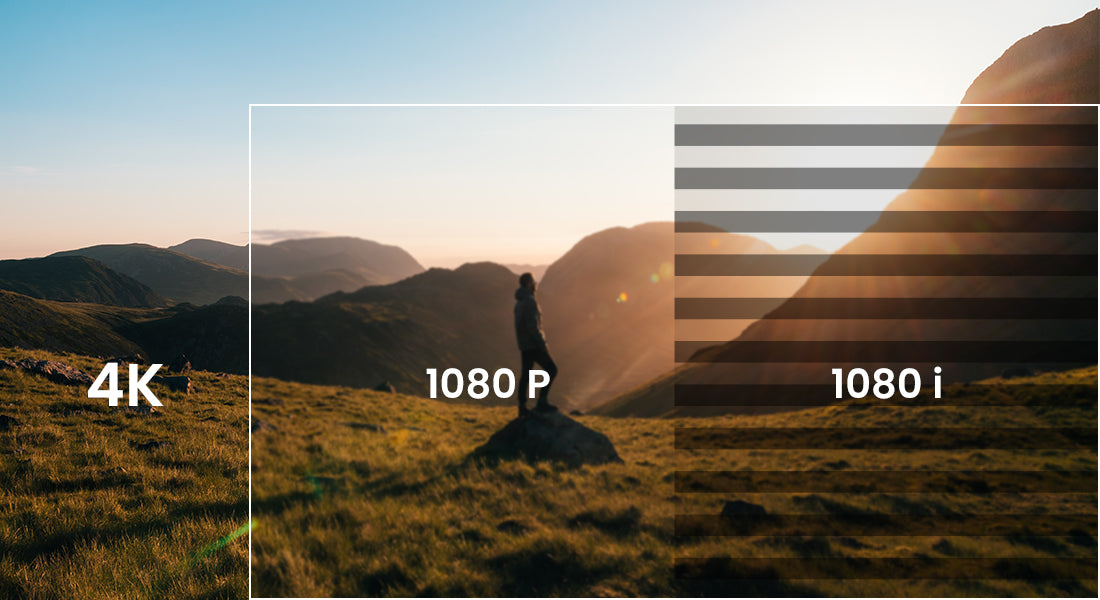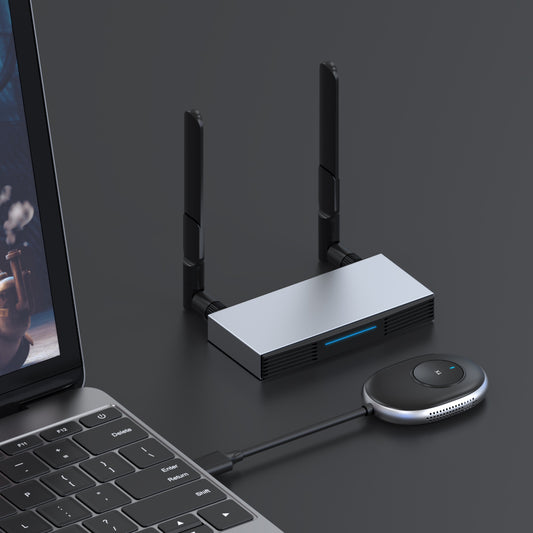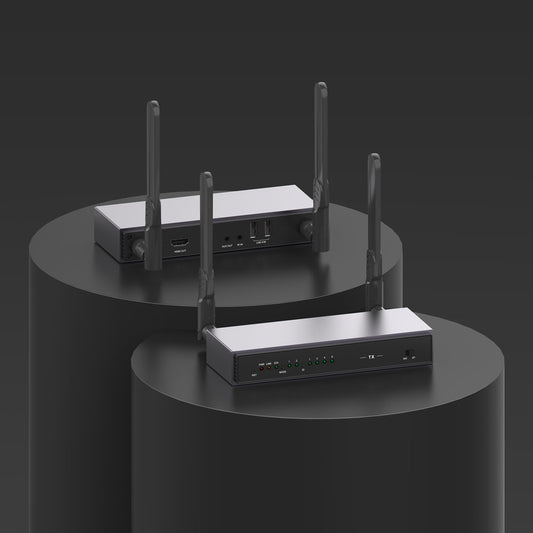
4K, 1080p, And 1080i Resolutions Explained
When looking for a TV, one of the first features you notice is its resolution. Frequently, the resolution is listed in the model name or even on the box itself.
The 1080 and 720 in 1080p and 720p refer to the vertical screen resolution measured in pixels. The more pixels in an image, the clearer it will appear. Therefore, a screen with 1920x1080 resolution (two million pixels multiplied) should have twice the sharpness of a screen with 1280x720 resolution (fewer than one million pixels). The p in 1080p and 720p stands for progressive scanning, which updates full frame pictures more quickly than typically interlaced information.
What do the terms "4K" and "1080p" mean?
Although they both talk about a display's resolution, it can be challenging to compare the two. The reason for this is that 1080p refers to an HD display's vertical pixel count. However, 4K doesn't necessarily refer to horizontal or vertical pixels. The latter, however, has 4 times as many pixels as the former, as indicated by their respective pixel counts. Through the following 4 features, we may differentiate them more clearly.
Clarity and fineness
With almost four times as many pixels, a 4K TV allows you to see much more information, and overall, movies should look clearer. You do need a screen that is sufficiently large to detect this difference, typically one that is 50 inches or more.
Color
Deeper shadows and more vivid colors are possible on 4K TVs because of the more pixels compared to 1080p TVs. While the resolution is crucial, innovations like OLED and HDR are more significant in this regard.
Content
There is still a substantial number more videos to watch in Full HD compared to 4K content. Even if you have a 4K TV, you might find yourself viewing a lot of upscaled 1080p because a lot of movies, games, and TV episodes are now available in 4K, but not all of them have made the transition yet.
Availability
By the year 2022, 4K TVs will be the norm rather than the exception. According to Statista, in the US, 4K TVs surpassed 1080p TVs in popularity in 2019. It is more difficult to find a 1080p TV now that 4K is the standard.
1080p vs. 4K Gaming
You can see the differences here side by side, so I won't have to explain them to you. It's simply amazing how much detail was paid. You should be aware, though, as a player, that resolution is not the only factor to consider. Winning a battle depends heavily on the refresh rate as well.
When given the option to pick between 1080p 60 fps and 4K 30 fps or 1080p 120 fps and 4K 60 fps, FHD resolution is unquestionably superior. Furthermore, some monitors even let you experience a mind-boggling 240Hz refresh rate, which is still not achievable at 2160p resolution.
Which one, resolution or refresh rate, would you choose, budget considerations aside? If you're a professional gamer, I believe 1080p will still be a good choice for you. The good news is that 4K games are now available for Sony and other manufacturers' gaming consoles.
1080i vs 1080p

Since both 1080p and 1080i systems are HD certified, they can both show 1920 x 1080 pixel images. The way the photos are shown, though, is what separates these two resolutions. The display mode is indicated by the letters I and "p": 1080i and 1080p, respectively, and stands for interlaced and progressive scan, respectively.
4K Ultra HD
Simply said, 4K Ultra HD refers to a screen that has a resolution that is four times higher than that of a Full HD (1080p) TV. This means that 8 million pixels may fit into the same area as merely 2 million on a Full HD TV. This was made possible by scaling down each pixel four times.
It doesn't make much sense to increase the resolution on smaller screens because each pixel is smaller and so only represents a little portion of a larger image. However, the extra pixels have a greater impact on larger panels because more of them can be accommodated.
What was the outcome for typical viewers? A better picture, more accurate color, and High Dynamic Range, or HDR, are available on the majority of new TVs (more on that in a bit).
Pixels
The smallest component of a digital picture or graphic that can be shown on a digital display device is a pixel.
The fundamental logical unit in digital graphics is the pixel. A whole image, movie, piece of text, or other visible objects on a computer monitor is made up of pixels.
The terms "pixel" and "picture element" both refer to the same thing.
HDR
High dynamic range (HDR) is a difficult concept to understand, and it's simple to confuse it with 4K or believe they are interchangeable. High Dynamic Range, or HDR, began to gain popularity at the same time that 4K TVs did.
Although it is sometimes advertised as a unit, it actually relates to the colors and brightness and has nothing to do with resolution. TVs that support HDR can display images that are brighter, darker, and more colorful because HDR content stores a larger range of finer-grained brightness, darkness, and color values than normal dynamic range video.
Consider it like this: HDR affects how much light and color each pixel can display, while 4K specifies how many pixels are in your video.
Not all 4K material is HDR, but when it is, and your TV can handle it, the greater range of light and color makes it look much better.
You need a TV that supports HDR in order to watch HDR material, ideally with a screen that can faithfully display the entire range needed for HDR. Some low-cost TVs can display HDR material and decode it, but their panels don't go dark enough, brilliant enough, or colorful to distinguish themselves significantly from content with conventional dynamic range.








